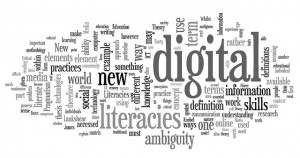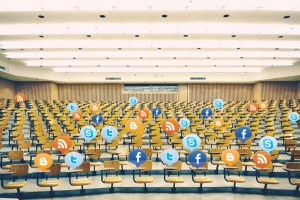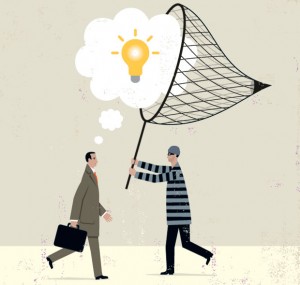The Internet has forever changed the way we live our lives. This is especially prevalent on college campuses, where you can’t walk by a group of students without seeing at least one person looking at their iPhone. I don’t think I could even name one person I know that doesn’t own a laptop and cell phone. We are in constant communication with one another, and connected to social media on a daily basis, if not an hourly basis. If something happened to me during the day I can immediately tell my friends about it in a group message and feel connected to them, even though I may not have seen them all day. We can quickly Google something we need to know, check a menu online to order takeout, and even check what is for dinner in the cafeteria at college. We now live in a digital world and its impacts range from our social lives to our academic lives to our professional lives, and we must learn how to adapt to the new rules of this new world.
______________________________________________________________
What is digital literacy?
While the definition of literacy is the ability to read and write, but this definition has changed as the digital world has developed. In his article Digital Literacy, Richard Lanham explains, “the word ‘literacy,’ meaning the ability to read and write, has gradually extended its grasp in the digital age until it has come to mean the ability to understand information, however it is presented” (Lanham “Digital Literacy”). Today, this means that most information we will encounter is multimodal. Articles online can have pictures and videos as well as links embedded within the writing.
To be deeply literate in the digital world means being well seen and well heard as well as well read, skilled at deciphering complex images and sounds as well as the syntactical complexity of words (Lanham “Digital Literacy”).
Lanham expresses the importance of students in todays age to be able to not only read words and understand their meaning, but interpret the multimodal aspects of digital information into the meaning of the writing as well. This type of writing allows for a broader interpretation and understanding of the ideas. It can also make online reading more enjoyable for the reader, as the multimodal aspect can break up the redundancies of reading text.
______________________________________________________________
What does this have to do with academics?
The importance of technology in education is paramount in today’s day in age. Because young people who are being educated right now grew up with technology, it is very familiar to them, and they have a better understanding of its many facets than the majority of older people. This should be used as a helpful tool.
In her article Using Digital Story Projects to Help Students Improve Reading and Writing, Hani Morgan explains:
Using technology effectively in school has many benefits. It keeps students motivated, helps them function well in their digital world, promotes academic gains in literacy, and facilitates the learning of a subject matter because technological tools allow students to perceive and create content through various formats including graphic images, audio, video, music, etc (Morgan 20).
An example of useful technology for teaching is Smart Boards, which are interactive whiteboards connected to a computer. Students can write directly on a webpage that is projected on the board, and it is a way to get students more involved in a discussion or activity. Another example of this type of useful technology is Google Docs, which allows multiple people to edit different types of documents from different computers, at the same time. This allows students to interact intellectually, and share ideas in real time even if they are not together in a classroom. The more that technology is included in an academic environment, it the more important it becomes to educate students on digital literacy, and what is really means to write online.
Suzanna McKee-Waddell supports the importance of digital literacy in her article Digital Literacy: Bridging the Gap with Digital Writing Tools, and describes, “Digital literacy is an emerging field of progressive literacy instruction…Teachers are seeking inventive forms of digital technology instruction to enable, engage and propel instruction in composition” (McKee-Waddell 26). This being said, digital literacy is not just a new field for students but also for teachers, and the teachers need an education in technology in the classroom. McKee-Waddell continues, “Simply stated, educators should engage and embrace student’s technological knowledge instead of allowing old avenues to constrain the medium of instructional delivery” (27). Right now, in most cases, the students in a classroom know more about technology than the educators do, simply because they have grown up with it. Because technology is changing so quickly, educators must have an open mind to learning about the digital world and how it can improve their classroom.
________________________________________________________
But, the Downsides
The benefits of technological advances in the digital age are countless, but these do not always come without consequences. As Neil Postman states in his article Five Things We Need to Know About Technological Change, “for every advantage a new technology offers, there is always a corresponding disadvantage. The disadvantage may exceed in importance the advantage, or the advantage may be well worth the cost” (Postman 27). For example, Facebook has many advantages, such as being able to connect with friends and family far away, or update people on important events you wish to share.
But a downfall of Facebook that you may not have originally considered is the information and pictures other people can post without your approval or knowledge, which could have negative affects on your relationships or professional life. While people may not have thought about this possible downfall when they began using Facebook, it is something people have to be conscious of. A more widespread comparison that Postman presents is cars, “think of the automobile, which for all of its obvious advantages, has poisoned our air, choked our cities and degraded the beauty of our natural landscape” (27). While this is a very broad example, it is a form of technology, and it does have serious downfalls. There are also downsides to technology in the classroom, as they can serve as a distraction for students who are checking social media on their phones or texting.
______________________________________________________________
A New Way to Cheat?
The concept of plagiarism has been widely accepted since writing became a profession in the 17th century, but the concept now has broader dimensions with the new digital age. In a New York Times article Plagiarism Lines Blur for Students in Digital Age, author Trip Gabriel writes about how students conceptions of plagiarism do not include technology. He starts off with a few examples:
At Rhode Island College, a freshman copied and pasted from a Web site’s frequently asked questions page about homelessness – and did not think he needed to credit a source in his assignment because the page did not include author information…At the University of Maryland, a student reprimanded for copying from Wikipedia in a paper on the Great Depression said he thought its entries – unsigned and collectively written – did not need to be credited since they counted, essentially, as common knowledge (Gabriel “Plagiarism Lines Blue for Students in Digital Age).
These are examples of the discrepancies students now face in school. With the wide range of online sources students can use to write papers and do research, it is not always clear to students what needs to be cited and how. Instead of just having to cite from books in a formulaic manner, students must now know how to cite from a blog post, or a review from a website.
In an article published in The Journal of Adolescent & Adult Literacy, Lea Calvert Evering & Gary Moorman discuss the complex and evolving concept of plagiarism. They explain, “With the vastness of the digital world, plagiarism is difficult to define and continuously evolving. Although plagiarism is clearly an academic issue, the proliferation of digital media with which students interact daily and the growth of the Internet as a source of information have made it a literacy issue as well” (Evering & Moorman 37). It is difficult for students to understand the do’s and don’ts of plagiarism in today’s digital world. It is something that needs to be incorporated into education so students are able to uphold respect for intellectual property.
______________________________________________________________
My Life and the Digital World
The digital writing course I am currently in has had a positive impact on not only my other courses this semester, but my writing as well. This course is structured very differently than any other course I have taken. It encourages me to write in a creative way, and to reflect on my thoughts and ideas and connect them back to my writing. Outside of the blog projects we are doing, we keep a journal, and do different exploration exercises. These exercises have us write down our observations about different things, and then reflect on these.
Our blog projects have given me an outlet to write about a personal experience that I am passionate about. I chose to write about my traveling, and reflect on the experiences I have had. I have gained not only a valuable skill in learning how to blog, but I have gained confidence in my writing overall. I have learned about myself as a writer, which would not have happened in a typical structured course. As a science major, I have learned to write in a formulaic manner with no room for self-expression, which is very different than writing a personal blog.
The experiences I have gained through digital writing will help me in my future career, hopefully in the biomedical field, as I will have a better understanding of how to share my ideas and research in the digital environment. So much information is being shared on the Internet and having the skills to contribute to this in a valuable way will make me an invaluable asset to my future employer. The importance of digital writing is growing, and my developing skills in digital literacy will help me through my academic and professional careers.
______________________________________________________________
Works Cited
Evering, Lea Calvert and Moorman, Gary. “Rethinking Plagiarism In The Digital Age.” Journal of Adolescent & Adult Literacy 56.1 (2012): 35-44. Web. 21 Oct. 2015.
Gabriel, Trip. “Plagiarism Lines Blur for Students in Digital Age.” The New York Times. The New York Times, 01 Aug. 2010. Web. 28 Oct. 2015.
Lanham, Richard. “Richard Lanham: Digital Literacy.” Richard Lanham: Digital Literacy. Scientific American, 1995. Web. 21 Oct. 2015.
McKee-Wardell, Suzanna. “Digital Literacy: Bridging The Gap With Digital Writing Tools.” Delta Kappa Gamma Bulletin. 82.1 (2015): 26-31. Web. 21 Oct. 2015.
Morgan, Hani. “Using Digital Story Projects To Help Students Improve In Reading and Writing.” Reading Improvement 51.1 (2014): 20-26. ERIC. Web. 21 Oct. 2015.
Postman, Neil. “Five Things We Need to Know About Technological Change.” Colorado, Denver. Lecture.





